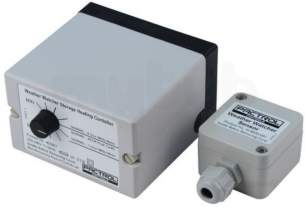Good morning
I have recently moved into a retirement flat which has underfloor electric heating installed throughout. Having downsized from a gas centrally home, this new abode is all electric with economy 7 and it’s taking time to get used to!
In my meter cupboard is a Pactrol Weather Watcher and Sensor wired into one side of a dual (switched Economy 7) tariff consumer meter – see attached images.


In the flat is a manual room heating thermostat
There are no instructions to operate the underfloor central heating other than the installation/commissioning downloads available from Pactrol which don’t assist to fine tune the central heating.
This technology has been around for a while, this central heating installation in my flat was done as new build in the mid 90’s .
Can anyone shed light how to operate this system economically and efficiently please.
I have recently moved into a retirement flat which has underfloor electric heating installed throughout. Having downsized from a gas centrally home, this new abode is all electric with economy 7 and it’s taking time to get used to!
In my meter cupboard is a Pactrol Weather Watcher and Sensor wired into one side of a dual (switched Economy 7) tariff consumer meter – see attached images.


In the flat is a manual room heating thermostat
There are no instructions to operate the underfloor central heating other than the installation/commissioning downloads available from Pactrol which don’t assist to fine tune the central heating.
This technology has been around for a while, this central heating installation in my flat was done as new build in the mid 90’s .
Can anyone shed light how to operate this system economically and efficiently please.


